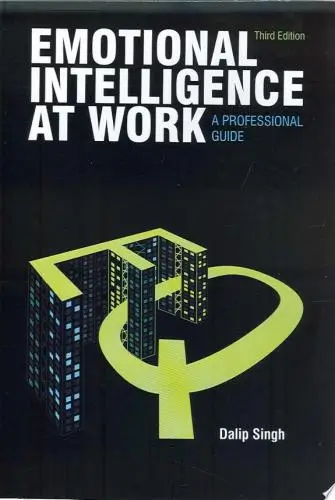
The 4 Disciplines of Execution
Achieving Your Wildly Important Goals
What's it about?
The 4 Disciplines of Execution is a guide to help your team fulfill its most significant objectives. This book introduces four essential principles: Focus on the Wildly Important, Act on the Lead Measures, Keep a Compelling Scoreboard, and Create a Cadence of Accountability. Through these disciplines, learn how to prioritize effectively, measure your progress, and maintain momentum in a team environment. Perfect for leaders and individuals alike, it offers a strategic approach to turning ambitious goals into reality.
About the Author
Chris McChesney, a mastermind of execution in the business world, co-authored "The 4 Disciplines of Execution," a transformative guide that empowers leaders to overcome the whirlwind of daily tasks and focus on strategic goals. McChesney's pragmatic approach, combined with real-world insights, turns the daunting into the doable, making his work a lighthouse for those navigating the rough seas of organizational change.
10 Key Ideas of The 4 Disciplines of Execution
Focus on the Wildly Important Goals (WIGs)
Concentrate your efforts on a limited number of goals that will make the most significant impact.
Spreading resources too thin across many objectives dilutes focus and effectiveness.
Identify what's absolutely crucial for success and channel your team's energy into achieving these few, vital goals.
This approach ensures that everyone understands what's important and can direct their efforts where they will count the most.
Learn DeeperIdentify Your Wildly Important Goals (WIGs): Take a moment to reflect on your current objectives. Which of these goals, if achieved, would have the most significant impact on your life or work? Narrow them down to 2-3 WIGs to ensure your focus is laser-sharp.
Set Specific, Measurable Targets: For each WIG, define clear outcomes that can be measured. This could mean setting a specific revenue target for your business, losing a certain amount of weight, or finishing a project by a particular deadline. The key is to know exactly what success looks like.
Create a Plan of Action: Break down your WIGs into smaller, manageable tasks. What actions do you need to take weekly or daily to move closer to your goal? Schedule these tasks and treat them as non-negotiable appointments with yourself.
Track Your Progress: Regularly review your progress towards your WIGs. This could be a weekly check-in where you assess what's working, what's not, and adjust your strategy accordingly. Celebrate small wins to stay motivated.
Limit New Goals: While working towards your WIGs, be cautious about taking on new goals or projects. Ask yourself if they align with or distract from your current WIGs. If they're not aligned, it might be best to postpone or delegate them.
- Example
Example 1: A small business owner identifies increasing customer satisfaction as a WIG because it directly impacts repeat business and referrals. They decide to focus on improving response times to customer inquiries and personalizing the shopping experience. They set measurable targets for response times and track monthly improvements in customer feedback.
- Example
Example 2: An individual sets a WIG to improve their physical health by losing 20 pounds. They break this down into actionable steps like scheduling five workouts per week and planning healthy meals. They track their weight weekly and adjust their diet and exercise plan based on their progress.
Act on the Lead Measures
Identify and influence the lead measures that will drive success for your Wildly Important Goals.
Lead measures are predictive and influenceable; they forecast the achievement of a goal before it happens and can be directly affected by your team's actions.
Focusing on lead measures allows teams to exert influence over their goals' outcomes, providing a clear path to achieving them through specific, actionable steps.
Learn DeeperIdentify Your Wildly Important Goals (WIGs): Start by pinpointing 1-3 goals that are crucial for your success. These should be specific, measurable, achievable, relevant, and time-bound (SMART).
Determine Your Lead Measures: For each WIG, identify 2-4 lead measures. These are activities that will directly influence the achievement of your goals. Ask yourself, 'What actions can we take that will have the most impact on reaching our goals?'
Track Your Progress: Create a simple tracking system for your lead measures. This could be a spreadsheet or a dashboard where you can regularly record your progress. Make sure it's visible and accessible to everyone involved.
Hold Regular Accountability Meetings: Schedule weekly or bi-weekly meetings with your team to review progress on your lead measures. Discuss what's working, what's not, and adjust your strategies accordingly.
- Example
If your WIG is to increase customer satisfaction by 20% within six months, a lead measure could be the number of customer service training sessions completed by your team each month. By focusing on improving the quality of customer service through training, you're directly influencing customer satisfaction.
- Example
For a personal goal of losing 10 pounds in three months, a lead measure might be the number of calories consumed daily or the amount of exercise completed each week. By controlling these lead measures, you're directly affecting your ability to lose weight.
Keep a Compelling Scoreboard
Visual Scoreboard Design for Wildly Important Goals
Key Features:
Clear Layout
Use a large, easy-to-read format that is visible from a distance.
Consider a whiteboard or digital display that can be updated in real-time.Sections for Lead and Lag Measures
- Lead Measures: Display these at the top.
These are the actions that drive results.
Use progress bars or checklists to show completion rates. - Lag Measures: Place these below the lead measures.
These are the outcomes that reflect the success of the lead measures.
Use graphs or charts to illustrate progress over time.
- Lead Measures: Display these at the top.
Color Coding
- Use green for goals that are on track.
- Yellow for caution or areas needing attention.
- Red for goals that are off track.
This visual cue helps team members quickly assess performance.
Progress Indicators
Include percentage completion for each measure.
Use icons or symbols to represent milestones achieved.
This adds a visual element that enhances engagement.Team Contributions
Dedicate a section to highlight individual or team contributions.
Recognize top performers or teams that are excelling.
This fosters a sense of competition and motivation.Regular Updates
Schedule regular intervals for updating the scoreboard.
This keeps the information current and relevant.
Encourage team members to participate in updates to foster ownership.Goal Reminders
Include a brief description of each Wildly Important Goal.
This keeps the team focused on the objectives and their importance.Feedback Loop
Create a space for comments or suggestions.
This encourages team members to share insights and improvements.
Conclusion:
A well-designed visual scoreboard not only tracks progress but also enhances team motivation and alignment.
Learn Deeper
By clearly differentiating between lead and lag measures, it provides immediate feedback that drives performance and fosters a competitive spirit.
Implementing these features will ensure that the scoreboard is an effective tool for achieving your Wildly Important Goals.Identify Your Wildly Important Goals (WIGs): Start by pinpointing 1-3 goals that are crucial for your success. These should be specific, measurable, achievable, relevant, and time-bound (SMART).
Design Your Scoreboard: Make it simple yet visually appealing. Use colors, graphs, or charts to differentiate between lead measures (actions you can control) and lag measures (the results of those actions). Ensure it's accessible to all team members, either physically in a common area or digitally where everyone can see it.
Update Regularly: Keep the scoreboard current by updating it at least once a week. This keeps the team informed about their progress and maintains momentum towards achieving the WIGs.
Review and Discuss: Schedule regular meetings to review the scoreboard, discuss what's working, and address challenges. Use this time to celebrate wins, however small, to keep the team motivated.
- Example
A sales team aiming to increase quarterly sales by 20% could use a digital dashboard visible to all team members, showing weekly sales figures (lead measure) against the quarterly goal (lag measure).
- Example
A health and wellness group focused on losing weight might create a shared spreadsheet where members log their weekly exercise hours (lead measure) and track their weight loss progress (lag measure), with a visual chart to illustrate everyone's progress towards the group goal.
Create a Cadence of Accountability
Establish regular check-ins to ensure the team remains focused on the Wildly Important Goals and progresses on lead measures.
These meetings should be short, focused, and action-oriented, allowing team members to report on their commitments, review the scoreboard, and plan for the next cycle.
This rhythm of accountability fosters transparency, encourages commitment, and helps identify and overcome obstacles quickly.
Learn DeeperSchedule Regular Team Meetings: Set a recurring time each week for your team to come together. This could be every Monday morning or Friday afternoon, depending on what works best for everyone. The key is consistency.
Keep Meetings Short and Focused: Aim for 30 minutes or less. Start by having each team member report on their commitments from the last meeting, discuss the progress on the scoreboard, and then plan their next actions.
Prepare a Visual Scoreboard: Create a simple, visual representation of your team's progress towards the Wildly Important Goals. This could be a chart, graph, or any format that everyone can understand at a glance.
Encourage Open Discussion: Allow team members to share challenges and seek advice from the group. This fosters a supportive environment where obstacles are addressed promptly.
Follow Up Individually: If a team member is struggling with their commitments, schedule a one-on-one meeting to understand how you can help. This shows support and keeps the individual accountable.
- Example
A sales team sets a Wildly Important Goal to increase quarterly sales by 20%. They meet every Friday to review individual and team sales figures against their target, discuss strategies that are working, and adjust tactics for the following week.
- Example
A software development team working on a new product feature commits to weekly check-ins. During these sessions, they review the number of completed tasks versus what was planned, identify any blockers, and reassign resources as needed to stay on track.
Empower Team Engagement
Involve team members in the goal-setting process and in identifying lead measures.
When individuals have a say in the goals and understand how their work contributes to the overall success, they are more engaged and motivated.
Empowerment leads to ownership, where each team member feels responsible for the outcome and is more likely to go above and beyond to achieve the set objectives.
Learn DeeperInvolve Your Team in Goal Setting: Start by organizing a team meeting specifically aimed at discussing and setting goals. Encourage every team member to share their thoughts and ideas. This process not only ensures that the goals are realistic but also makes everyone feel valued and involved.
Identify Lead Measures Together: Lead measures are the activities that will drive your team towards achieving the goal. Collaborate with your team to identify these measures. For example, if your goal is to improve customer satisfaction, a lead measure could be the number of customer follow-up calls made each week.
Regular Check-ins on Progress: Schedule regular meetings, perhaps weekly or bi-weekly, to review progress towards the goals and lead measures. Use this time to celebrate successes, address challenges, and adjust strategies as needed. This keeps the team focused and motivated.
Empower Individual Accountability: Assign specific responsibilities related to the lead measures to each team member. This creates a sense of ownership and accountability. Make sure everyone knows what they are responsible for and how it contributes to the overall goal.
Foster a Culture of Transparency and Support: Encourage open communication about the progress and challenges in meeting the goals. Create an environment where team members can ask for help and support each other. This builds a strong, cohesive team that is more likely to succeed.
- Example
A software development team sets a goal to reduce the number of bugs in their product. They involve the whole team in identifying the lead measures, such as code review hours per week and automated test coverage percentage. Each developer takes responsibility for certain measures, and the team meets weekly to discuss progress.
- Example
A sales team aims to increase their quarterly sales by 20%. They work together to set this goal and decide that the lead measures will be the number of new client meetings each week and the number of follow-up calls with potential clients. Each salesperson tracks their own progress, and the team celebrates individual achievements in their bi-weekly meetings.
Deeper knowledge. Personal growth. Unlocked.
Unlock this book's key ideas and 15M+ more. Learn with quick, impactful summaries.
Read Full SummarySign up and read for free!
The 4 Disciplines of Execution Summary: Common Questions
Experience Personalized Book Summaries, Today!
Discover a new way to gain knowledge, and save time.
Sign up for our 7-day trial now.
No Credit Card Needed

Similar Books

Emotional Intelligence at Work
Dalip Singh
Seeing the Big Picture
Kevin Cope
Leadership Is Concept Heavy
Dr. Enoch Antwi
Great by Choice
Jim Collins
The Leader′s Guide to Coaching in Schools
John Campbell
Preparing School Leaders for the 21st Century
Stephan Gerhard Huber
The E-Myth Manager
Michael E. Gerber
Leadership Is Language
L. David Marquet
Start-up Nation
Dan Senor
The Founder's Dilemmas
Noam WassermanTrending Summaries

Peak
Anders Ericsson
Never Split the Difference
Chris Voss
Smart Brevity
Jim VandeHei
The Psychology of Money
Morgan Housel
The First 90 Days
Michael D. Watkins
Atomic Habits
James Clear
Thinking, Fast and Slow
Daniel Kahneman
The Body Keeps the Score
Bessel van der Kolk M.D.
The Power of Regret
Daniel H. Pink
The Compound Effect
Darren HardyNew Books

Job Interviews For Dummies®
Joyce Lain Kennedy
Job Interviews In A Week
Alison Straw
Handbook of Career Development
Gideon Arulmani
The Art of Spending Money
Morgan Housel
$100M Offers
Alex Hormozi
A Candle for Kiri
Edna Mae Holm
Principles of Marketing, Global Edition
Gary Armstrong
Serpent Rising: The Kundalini Compendium
Neven Paar
Feeling Is the Secret
Neville Goddard
